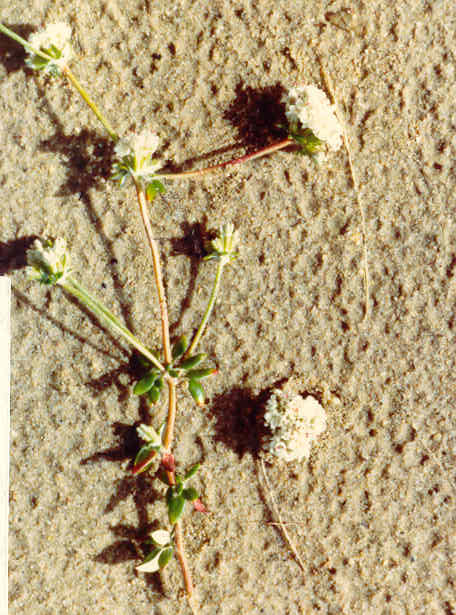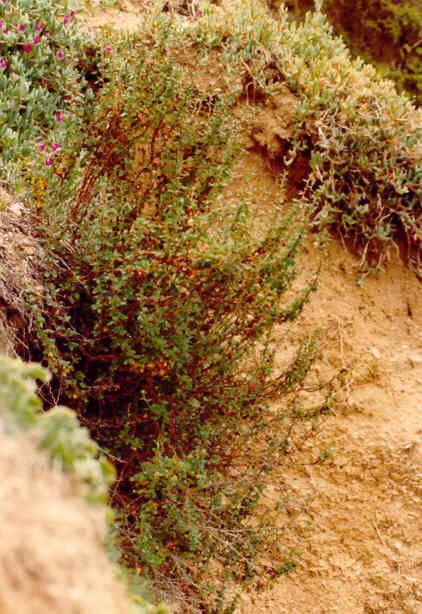
Eriogonum parvifolium Smith
 |
Eriogonum parvifolium Smith
Polygonaceae (Buckwheat Family)NativeBuckwheatBluff Buckwheat |
February Photo
Plant Characteristics:
Shrubs with loosely branched decumbent or prostrate stems 3-10 dm. long,
thinly floccose, densely leafy to the summit; lvs. fascicled, round-ovate to
lance-oblong, thickish, revolute, sometimes cordate at the base, 5-15 mm. long,
on shorter petioles, the blades green and glabrate above, densely
white-tomentose beneath; flowering stems few, mostly 2-5 cm. long, simple or
forked, bearing compact heads 1-2 cm. in diam.; invols. glabrate to somewhat
woolly, turbinate-campanulate, 3-4 mm. long; calyx white or tinged rose,
glabrous, ca. 3 mm. long, the segms. obovate; fils. pilose basally; aks.
ovoid-deltoid, 2.5 mm. long.
Habitat:
Common on bluffs and dunes along the coast; Coastal Strand, Coastal Sage
Scrub; San Diego Co. to Monterey Co. Mostly
summer, but with some fls. most of the year.
Name:
Greek, erion, wool, and gonu, joint or knee, the type genus
E. tomentosum being hairy at the nodes.
(Munz, Flora So. Calif. 677).
Latin, parvus, small and folium, leaf.
(Jaeger 103,184). Referring
to the small leaves.
General:
Uncommon in the study area. Found
only on the Castaway's bluffs. (my
comment).
Text Ref:
Hickman, Ed. 878; Munz, Calif. Flora 353; Munz, Flora So. Calif.
693; Roberts 33.
Photo Ref:
April 6 83 # 5,6; Feb 2 84 # 19.
Identity: by R. De Ruff, confirmed by F. Roberts.
First Found: April 1983.
Computer Ref: Plant Data 256.
Have plant specimen.
Last edit 4/8/05.
 |
 |
April Photo April Photo